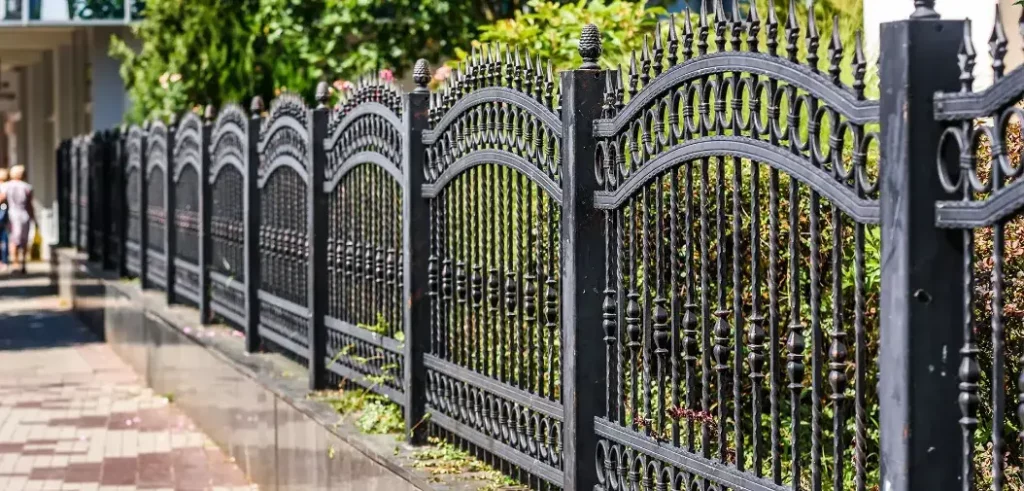Ornamental metal fences not only enhance property aesthetics but also strengthen security, presenting a variety of design choices and robust installation methodologies. These fences, crafted from materials such as wrought iron, aluminum, or steel, can be customized with various decorative elements like spear tops, finials, and intricate scrollwork. Each choice in material and design impacts the overall durability, maintenance needs, and cost-effectiveness of the fence. Understanding the nuances of these options, alongside a careful approach to their installation— which involves precise boundary measurements and secure post setting— is vital for ensuring that the fence not only meets aesthetic desires but also stands the test of time and function. How well one navigates these considerations can greatly influence the success of the installation.
Exploring Design Options
When selecting ornamental metal fences, the variety of design options available allows for both aesthetic appeal and functional utility, catering to diverse architectural styles and security needs. Materials such as wrought iron, aluminum, and steel offer distinct advantages and can be crafted into a myriad of designs ranging from the elegantly simple to the intricately ornate.
Wrought iron, known for its durability and classic appearance, is ideal for those seeking a traditional yet robust boundary solution. Aluminum, being lightweight and resistant to corrosion, suits more contemporary architectural styles and coastal environments where salt air is prevalent.
For enhanced security features, designs can integrate spear tops and pointed finials which deter intrusion but also contribute to an aesthetic of regal exclusivity. The inclusion of customization options such as scrolls, rings, and custom welded motifs can align with personal tastes or community standards, thereby fostering a sense of belonging and identity within a neighborhood.
Choosing the appropriate color and finish, such as powder coating, not only protects the metal but also complements the property’s external palette. This consideration ensures that the fence is not merely a security measure but a cohesive part of the home’s overall appeal, enhancing both the property value and community aesthetic.
Step-by-Step Installation Guide
How does one begin the process of installing an ornamental metal fence? The initial step is to meticulously plan the layout. This involves marking the boundary lines clearly and confirming property lines to avoid disputes. Use stakes and string to delineate where the fence will run, confirming the lines are straight and corners are precisely squared.
Next, dig post holes to the recommended depth—typically about 2 feet deep and 6 inches wide, though this can vary with your soil type and the height of the fence. Employ a post-hole digger or an auger for efficiency and accuracy.
Following this, insert the fence posts. These should be set in concrete to warrant stability. Mix the concrete according to manufacturer’s instructions, pour into the hole around the post, and verify that each post is plumb using a level.
Once the concrete has set, usually after about 24 to 48 hours, attach the horizontal rails to the posts. Verify these are level before securing.
Finally, mount the fence panels to the rails, checking alignment as you progress along the fence line.
This systematic approach not only installs a robust and attractive boundary but also fosters a sense of community and delineation within your space.

